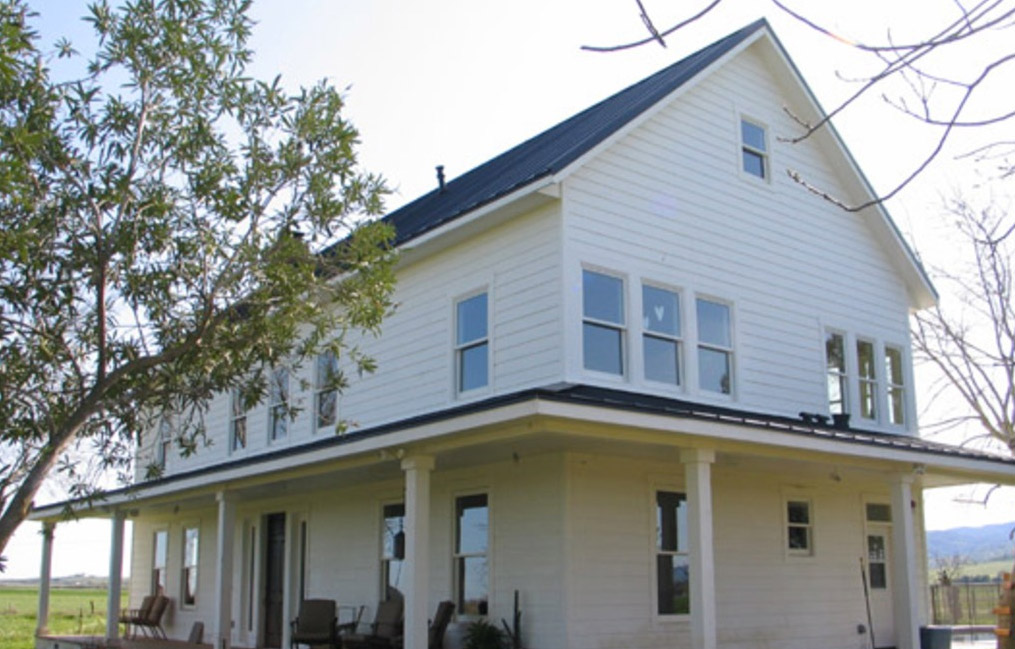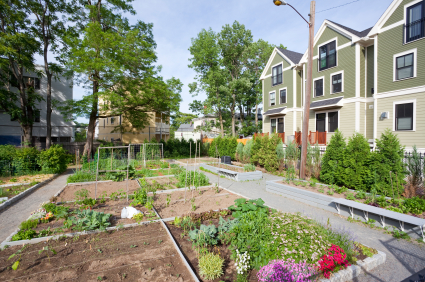Community Gardens, Farm Co-ops, and Land Trusts
As our global urban population continues to swell, the growth of community gardens, urban agriculture, farming co-ops, and land trusts is rising as well. How will urban planners accommodate these needs and govern their operation?
Currently, the worldwide percentage of people living in urban areas exceeds 50%; in the United States, that number swells to more than 80%. City planners face increased demand from urban populations for places to collectively garden and farm.

“Today urban and rural areas are two separate places,” said Jim Breuckman, AICP, principal planner for McKenna Associates, Inc. “But even in the 19th century, city lots were connected to a community parcel within walking distance of home.”
A generation ago, migration to the city from the farmlands may have represented a lifestyle upgrade, but now city dwellers complain of a disconnect from rural amenities like gardening, parks, and public green spaces. One way of addressing this problem is to introduce farming and other agrarian activities into cities. “We’re seeing an interest in providing safe, healthy food through activities such as starting community gardens or raising chickens,” said Breuckman. “People want to know where their food comes from, and they are more interested in its quality.” This type of land use has, however, caught most city planning institutions unprepared, and communities throughout the country are working to find ways to implement more responsible urban planning policies.
“Urban agriculture can be a way of putting vacant land back into productive use and giving it a caretaker. It can rebalance supply and demand.” Jim Breuckman, McKenna Associates
Zoning for community gardens
Zoning ordinances need, first and foremost, to provide basic guidelines governing the operation of community gardens and farming co-ops. For example, most zoning ordinances specify that a clear set of written rules be in place for a community garden and that a garden coordinator be assigned to act as overseer. It is also common for zoning to address environmental concerns, such as runoff, and to limit the number and size of structures that can be built on the site.
Breuckman, whose firm specializes in consulting with local governments and helping them to write ordinances, explains that most of the goals are pretty straightforward. “The language addressing chickens is the most specific. You want to reduce the nuisance factor, usually by setting limits on the number of chickens one is allowed to keep, and maybe specifying that there are to be no roosters – the 5:30 a.m. wakeup is one of the biggest annoyances associated with chickens,” Breuckman said. “When it comes to larger agricultural activities – or for-profit ones – it’s just a question of how big and how intense.”
City support of community gardens and farming co-ops
In addition to putting protective measures in place, local policies and programs can encourage the establishment of community farming. Some cities across the United States have pioneered such efforts; their diverse and progressive solutions can be used as models for other cities to follow.
- In Seattle, Washington, the city’s comprehensive plan establishes a goal of one community garden for every 2,500 households in an urban area. Also, the Seattle Department of Neighborhoods manages community gardens via the P-Patch Community Gardening Program.
- Residents of Columbia, South Carolina can rent plots of land directly from the city.
- In Washington, D.C., the Neighborhood Farm Initiative created a census of existing gardens to facilitate communication and improve operations within the community farm network.
- Manhattan, Kansas partnered with a community learning center to provide residents with a cooperative gardening site.
- Chicago, Illinois founded its own non-profit, NeighborSpace, to manage community open space.
- In Philadelphia, a non-profit land trust known as the “Neighborhood Gardens Association” formed 25 years ago when grassroots groups partnered with the Pennsylvania Horticultural Society and the Penn State Urban Gardening Program.
- The 1975 Quimby Act in California authorized city and county governments to require developers to set aside a percentage of developable land as green space; local ordinances can leverage this by explicitly allowing the green space to be available for community gardening.
- Multi-family building construction in Pasadena, California, must conform to the “City of Gardens” ordinance by providing a centrally located garden.
- The city of Alexandria, Virginia has an Environmental Action Plan that encourages the hiring of extension agents who can teach residents about organic gardening, work with schools to establish edible schoolyards, etc.
Benefits of community gardens and farm co-ops
The challenge for densely populated or growing cities is to mediate between sometimes competing interests within a limited space. For other urban areas, however, the challenges are different. McKenna Associates operates several offices throughout the Great Lakes region, but is based in Detroit, where the declining economy has resulted in a surplus of vacant land. “Urban agriculture can be a way of putting vacant land back into productive use and giving it a caretaker,” said Breuckman, “It can re-balance supply and demand.”
Whether a city is attempting to recapture its economic vitality, protect low-income citizenry from the loss of an important neighborhood asset, or simply help put people back in touch with their food supply, city planners must put a coherent mechanism for land procurement and protection in place. Each day, urban planning is proving that this can be done, and the evidence is on their kitchen tables.

Kristin Dispenza
Kristin graduated from The Ohio State University in 1988 with a B.S. in architecture and a minor in English literature. Afterward, she moved to Seattle, Washington, and began to work as a freelance design journalist, having regular assignments with Seattle’s Daily Journal of Commerce.
After returning to Ohio in 1995, her freelance activities expanded to include writing for trade publications and websites, as well as other forms of electronic media. In 2011, Kristin became the managing editor for Buildipedia.com.
Kristin has been a features writer for Buildipedia.com since January 2010. Some of her articles include:







